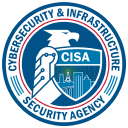欢迎大家赞助一杯啤酒🍺 我们准备了下酒菜:Formal mathematics/Isabelle/ML, Formal verification/Coq/ACL2, C++/F#/Lisp
Security
小 |
小 (→链接) |
||
| (未显示1个用户的43个中间版本) | |||
| 第3行: | 第3行: | ||
==新闻== | ==新闻== | ||
{{SeeWikipedia|Computer security}} | {{SeeWikipedia|Computer security}} | ||
| − | + | *[https://yahoo.tumblr.com/post/150781911849/an-important-message-about-yahoo-user-security 雅虎证实5亿用户帐户被盗] (2016.09.22) | |
| + | |||
| + | ==合规性== | ||
| + | * Payment Card Industry Data Security Standard (PCI DSS) | ||
| + | * General Data Protection Regulation (GDPR) | ||
| + | * NIST Special Publication 800-53 (NIST 800-53) | ||
| + | * Good Practice Guide 13 (GPG13) | ||
| + | * Trust Services Criteria (TSC SOC2) | ||
| + | * Health Insurance Portability and Accountability Act (HIPAA) | ||
==视频== | ==视频== | ||
| 第34行: | 第42行: | ||
==安全过程== | ==安全过程== | ||
| + | ===最佳实践=== | ||
| + | [http://www.colocationamerica.com/blog/5-safe-networking-practices Top 5 Best Practices for Safe Networking] | ||
| + | * 1. Use a Secure Intranet | ||
| + | * 2. Use VPNs at Home | ||
| + | * 3. Design Firewalls with Safety in Mind | ||
| + | * 4. Encrypting and Limiting Access to Business Data | ||
| + | * 5. Educate Employees about Cybersecurity and Safe Networking | ||
| + | |||
===安全策略=== | ===安全策略=== | ||
| + | [[Image:malware.jpg|right|Malware]] | ||
要建立一套有效的安全策略和控制,您需要确定您的计算机系统中存在的漏洞,并审查防御这些漏洞的安全策略和控制。这一审查除检查当前策略之外,还应包括缺少策略的领域。这些领域包括: | 要建立一套有效的安全策略和控制,您需要确定您的计算机系统中存在的漏洞,并审查防御这些漏洞的安全策略和控制。这一审查除检查当前策略之外,还应包括缺少策略的领域。这些领域包括: | ||
* 物理计算机安全策略,如物理访问控制。 | * 物理计算机安全策略,如物理访问控制。 | ||
| 第81行: | 第98行: | ||
更多信息:[http://technet.microsoft.com/zh-cn/library/cc722918%28en-us%29.aspx Data Security and Data Availability in the Administrative Authority] | 更多信息:[http://technet.microsoft.com/zh-cn/library/cc722918%28en-us%29.aspx Data Security and Data Availability in the Administrative Authority] | ||
| − | == | + | ==项目== |
| − | + | [[文件:gnutls-logo.png|GnuTLS|right|GnuTLS]] | |
| − | + | [[文件:Openssl.png|OpenSSL|right|OpenSSL]] | |
| − | + | [[文件:LibreSSL-logo.jpeg|LibreSSL|LibreSSL]] | |
| + | [[文件:Letsencrypt-logo.png|right|Let's Encrypt]] | ||
| + | [[文件:Keycloak-logo.png|right|Keycloak]] | ||
| + | [[文件:CISA-logo.png|right|CISA]] | ||
| + | [[文件:greenbone-logo.png|right|Greenbone]] | ||
| + | [[文件:greenbone.png|right|Greenbone]] | ||
| + | *[https://github.com/sbilly/awesome-security Awesome Security] [[image:awesome.png]] | ||
| + | *[https://github.com/Hack-with-Github/Awesome-Hacking Awesome Hacking] [[image:awesome.png]] | ||
| + | *[https://github.com/rshipp/awesome-malware-analysis Awesome Malware Analysis] [[image:awesome.png]] | ||
| + | *[https://github.com/jivoi/awesome-osint Awesome OSINT] [[文件:awesome.png]] | ||
| + | *[https://github.com/cisagov Cybersecurity and Infrastructure Security Agency (CISA)] 网络安全和基础设施安全局 | ||
| + | *[https://github.com/cmu-sei CMU Software Engineering Institute] | ||
| + | *[[cryptography]] | ||
| + | *[[Encryption]] | ||
| + | *[[GnuTLS]] | ||
| + | *[[LibreSSL]] | ||
| + | *[[OpenSSL]] | ||
| + | *[[BoringSSL]] | ||
| + | *[[mbed TLS]] | ||
| + | *[[Apache Shiro]] | ||
| + | *[[ASP.NET Security]] | ||
| + | *[[CA]], [[PKI]] | ||
| + | *[[Let's Encrypt]] | ||
| + | *[[EJBCA]] | ||
| + | *[[ModSecurity]] | ||
| + | *[[Firewall]] | ||
| + | *[[OpenSSF]] | ||
| + | *[[OWASP]] | ||
| + | *[[OpenBSD]] | ||
| + | *[[Kali Linux]] | ||
| + | *[[Kerberos]] | ||
| + | *[[Keycloak]] | ||
| + | *[[Open Policy Agent]] | ||
| + | *[https://github.com/opendxl/ OpenDXL] | ||
| + | *[https://github.com/casbin Casbin] authorization library | ||
| + | *[https://github.com/jedisct1/libsodium/ libsodium] | ||
| + | *[https://github.com/OWASP/owasp-masvs OWASP Mobile Application Security Verification Standard (MASVS)] | ||
| + | *[https://github.com/greenbone/ Greenbone @ GitHub] | ||
| + | |||
| + | ==图书== | ||
| + | [[文件:Security-Engineering-v3.jpg|right|thumb|Security Engineering Third Edition]] | ||
| + | [[文件:security-engineering-v2.png|right|thumb|Security Engineering Second Edition]] | ||
| + | *《Security Engineering》Third Edition 已出版 | ||
| + | *[http://www.cl.cam.ac.uk/~rja14/book.html 《Security Engineering》Second Edition] 将于2020年11月出版。 | ||
| + | |||
| + | Security Engineering: A Guide to Building Dependable Distributed Systems 安全工程:建立可靠的分布式系统指南 | ||
| + | |||
| + | *[http://book.huihoo.com/security-engineering/SEv2-toc.pdf Table of contents] | ||
| + | *[http://book.huihoo.com/security-engineering/SEv2-pref.pdf Preface] | ||
| + | *[http://book.huihoo.com/security-engineering/SEv2-acks.pdf Acknowledgements] | ||
| + | *[http://book.huihoo.com/security-engineering/SEv2-c01.pdf Chapter 1: What is Security Engineering?] | ||
| + | *[http://book.huihoo.com/security-engineering/SEv2-c02.pdf Chapter 2: Usability and Psychology] | ||
| + | *[http://book.huihoo.com/security-engineering/SEv2-c03.pdf Chapter 3: Protocols] | ||
| + | *[http://book.huihoo.com/security-engineering/SEv2-c04.pdf Chapter 4: Access Control] | ||
| + | *[http://book.huihoo.com/security-engineering/SEv2-c05.pdf Chapter 5: Cryptography] | ||
| + | *[http://book.huihoo.com/security-engineering/SEv2-c06.pdf Chapter 6: Distributed Systems] | ||
| + | *[http://book.huihoo.com/security-engineering/SEv2-c07.pdf Chapter 7: Economics] | ||
| + | *[http://book.huihoo.com/security-engineering/SEv2-c08.pdf Chapter 8: Multilevel Security] | ||
| + | *[http://book.huihoo.com/security-engineering/SEv2-c09.pdf Chapter 9: Multilateral Security] | ||
| + | *[http://book.huihoo.com/security-engineering/SEv2-c10.pdf Chapter 10: Banking and Bookkeeping] | ||
| + | *[http://book.huihoo.com/security-engineering/SEv2-c11.pdf Chapter 11: Physical Protection] | ||
| + | *[http://book.huihoo.com/security-engineering/SEv2-c12.pdf Chapter 12: Monitoring and Metering] | ||
| + | *[http://book.huihoo.com/security-engineering/SEv2-c13.pdf Chapter 13: Nuclear Command and Control] | ||
| + | *[http://book.huihoo.com/security-engineering/SEv2-c14.pdf Chapter 14: Security Printing and Seals] | ||
| + | *[http://book.huihoo.com/security-engineering/SEv2-c15.pdf Chapter 15: Biometrics] | ||
| + | *[http://book.huihoo.com/security-engineering/SEv2-c16.pdf Chapter 16: Physical Tamper Resistance] | ||
| + | *[http://book.huihoo.com/security-engineering/SEv2-c17.pdf Chapter 17: Emission Security] | ||
| + | *[http://book.huihoo.com/security-engineering/SEv2-c18.pdf Chapter 18: API Security] | ||
| + | *[http://book.huihoo.com/security-engineering/SEv2-c19.pdf Chapter 19: Electronic and Information Warfare] | ||
| + | *[http://book.huihoo.com/security-engineering/SEv2-c20.pdf Chapter 20: Telecom System Security] | ||
| + | *[http://book.huihoo.com/security-engineering/SEv2-c21.pdf Chapter 21: Network Attack and Defence] | ||
| + | *[http://book.huihoo.com/security-engineering/SEv2-c22.pdf Chapter 22: Copyright and DRM] | ||
| + | *[http://book.huihoo.com/security-engineering/SEv2-c23.pdf Chapter 23: The Bleeding Edge] | ||
| + | *[http://book.huihoo.com/security-engineering/SEv2-c24.pdf Chapter 24: Terror, Justice and Freedom] | ||
| + | *[http://book.huihoo.com/security-engineering/SEv2-c25.pdf Chapter 25: Managing the Development of Secure Systems] | ||
| + | *[http://book.huihoo.com/security-engineering/SEv2-c26.pdf Chapter 26: System Evaluation and Assurance] | ||
| + | *[http://book.huihoo.com/security-engineering/SEv2-c27.pdf Chapter 27: Conclusions] | ||
| + | *[http://book.huihoo.com/security-engineering/SEv2-biblio.pdf Bibliography] | ||
| + | *[http://book.huihoo.com/security-engineering/SEv2-index.pdf Index] | ||
==文档== | ==文档== | ||
| 第90行: | 第185行: | ||
*[http://docs.huihoo.com/blackhat/usa-2012/BH_US_12_Serna_Leak_Era_Slides.pdf The info leak era on software exploitation] | *[http://docs.huihoo.com/blackhat/usa-2012/BH_US_12_Serna_Leak_Era_Slides.pdf The info leak era on software exploitation] | ||
*[http://docs.huihoo.com/blackhat/usa-2012/BH_US_12_Song_Royal_Flowers_Automated_Slides.pdf Flowers for Automated Malware Analysis] | *[http://docs.huihoo.com/blackhat/usa-2012/BH_US_12_Song_Royal_Flowers_Automated_Slides.pdf Flowers for Automated Malware Analysis] | ||
| + | *[http://docs.huihoo.com/techtarget/searchsecurity/ SearchSecurity安全文档] | ||
| + | |||
| + | ==图集== | ||
| + | <gallery widths=100px heights=100px perrow=6> | ||
| + | image:security-systems.png|安全系统 | ||
| + | Image:web-security.jpg|Web安全产品 | ||
| + | image:notary-client-server-signer.png|Notary | ||
| + | image:gartner-mq-casb-2020.png|云访问安全代理(CASB) | ||
| + | image:Gartner-Magic-Quadrant-for-Application-Security-Testing-2019.jpeg|Gartner2019应用安全测试 | ||
| + | image:standard-security-framework.png|标准安全框架 | ||
| + | image:Threat-Graph.png|Threat Graph | ||
| + | image:malware-and-ransomware.png|恶意软件勒索软件 | ||
| + | image:Tsunami-Scan-Orchestration.png|Tsunami | ||
| + | image:seven-domains-of-a-typical-IT-infrastructure.png|典型IT基础设施的7个域 | ||
| + | </gallery> | ||
==链接== | ==链接== | ||
*[http://blackhat.com Black Hat] | *[http://blackhat.com Black Hat] | ||
| − | * http://www.securityfocus.com/ | + | *http://www.securityfocus.com/ |
| + | *[https://www.mcafee.com/blogs/other-blogs/mcafee-labs/ McAfee Labs] | ||
*[http://security.ctocio.com.cn/whitepapers/244/8649744.shtml 僵尸网络的工作原理与防御] | *[http://security.ctocio.com.cn/whitepapers/244/8649744.shtml 僵尸网络的工作原理与防御] | ||
*[http://sec.chinabyte.com/ARP/ 专题: 深入解析ARP攻击及防御技巧] | *[http://sec.chinabyte.com/ARP/ 专题: 深入解析ARP攻击及防御技巧] | ||
| 第103行: | 第214行: | ||
*[[ISACA|国际信息系统审计协会]] | *[[ISACA|国际信息系统审计协会]] | ||
*[http://www.infoq.com/cn/articles/linkedin-database-leak-thinking 由Linkedin数据库泄漏引发的思考] | *[http://www.infoq.com/cn/articles/linkedin-database-leak-thinking 由Linkedin数据库泄漏引发的思考] | ||
| + | *[https://www.aqniu.com/tools-tech/49570.html 28款DevSecOps工具助力安全开发] | ||
| − | + | [[category:security]] | |
| − | + | [[category:identity]] | |
| − | [[ | + | [[category:CA]] |
| + | [[category:PKI]] | ||
| + | [[category:computer science]] | ||
2022年8月9日 (二) 10:45的最后版本
2004年9月,IDC首度提出“统一威胁管理”的概念,即将防病毒、入侵检测和防火墙安全设备划归统一威胁管理(Unified Threat Management,简称UTM)新类别。UTM设备应该具备的基本功能包括网络防火墙、网络入侵检测/防御和网关防病毒功能。
目录 |
[编辑] 新闻
| |
您可以在Wikipedia上了解到此条目的英文信息 Security Thanks, Wikipedia. |
- 雅虎证实5亿用户帐户被盗 (2016.09.22)
[编辑] 合规性
- Payment Card Industry Data Security Standard (PCI DSS)
- General Data Protection Regulation (GDPR)
- NIST Special Publication 800-53 (NIST 800-53)
- Good Practice Guide 13 (GPG13)
- Trust Services Criteria (TSC SOC2)
- Health Insurance Portability and Accountability Act (HIPAA)
[编辑] 视频
[编辑] 主机
操作系统(主机)安全:
[编辑] CISSP认证
- CISSP认证考试之一一CISSP简介
- CISSP认证培训之二—一信息安全基础
- CISSP认证培训之三——安全管理基础及管理职责
- CISSP课程之四——安全管理者及数据所有人员职责与安全控制
- CISSP考试讲解之五——信息安全术语定义
- CISSP培训课程之六——信息安全风险分析
- CISSP培训之007——风险应对
- CISSP认证中文培训之八——信息安全策略、标准、指南和流程
[编辑] 安全过程
[编辑] 最佳实践
Top 5 Best Practices for Safe Networking
- 1. Use a Secure Intranet
- 2. Use VPNs at Home
- 3. Design Firewalls with Safety in Mind
- 4. Encrypting and Limiting Access to Business Data
- 5. Educate Employees about Cybersecurity and Safe Networking
[编辑] 安全策略
要建立一套有效的安全策略和控制,您需要确定您的计算机系统中存在的漏洞,并审查防御这些漏洞的安全策略和控制。这一审查除检查当前策略之外,还应包括缺少策略的领域。这些领域包括:
- 物理计算机安全策略,如物理访问控制。
- 网络安全策略(例如,电子邮件和 Internet 策略)。
- 数据安全策略(访问控制和完整性控制)。
- 应急和灾难恢复计划及测试。
- 计算机安全意识和培训。
- 计算机安全管理和协调策略。
- 所购买的软件的符合性。
更多信息:Security Strategies
[编辑] 风险评估
采用正式的安全风险管理过程,企业能够以最具成本效益的方式运营,并且使已知的业务风险维持在可接受的水平。正式的安全风险管理过程也向组织提供了一致且清晰明了的方式来组织有限资源并区分这些资源的优先次序,从而管理风险。在您采用适当的、具有成本效益的控制措施将风险降低到可接受水平时,您将认识到使用安全风险管理的好处。
区分风险的优先次序或评估风险的方法多种多样,但是大多数方法基于下列两种方法中的一种或者同时基于这两种方法:
- 定量风险评估:
为资产分配的货币价值;一个全面的重大威胁列表;每一个威胁发生的概率;各威胁在 12 个月内给公司带来的潜在损失;推荐的安全措施、控制措施和行为。
- 定性风险评估
通常通过调查表和合作研讨会的组合形式执行定性风险分析,涉及来自组织内各个部门的人员,例如信息安全专家、信息技术经理和员工、企业资产所有者和用户以及高级经理。
更多信息:安全风险管理指南
[编辑] 事件响应
您必须解决每个安全事件,从而最大限度地降低对您的组织及其数据的影响。以下步骤可以帮助您快速且有效地管理安全事件。
- 1.保护生命和人身安全
如果受影响的计算机控制生命支持设备,则可能无法选择将其关闭。
- 2.控制损害
立即保护重要数据、软件和硬件。隔离受影响的计算机和服务器可能导致计算机服务中断,而继续使用这些系统可能导致损坏范围不断扩大。您必须作出自己的判断。如果已经具有风险评估策略,那么决策就会容易得多。
- 3.评估损害
立即备份所有受攻击服务器上的硬盘并妥善保管,以备日后法庭取证用。然后评估损害。您应在遏制情形并复制硬盘后尽快确定攻击造成的损害程度。
- 4.确定损害的原因
为了确定攻击的来源,必须弄清此次攻击瞄准的是哪些资源,以及它是通过什么安全漏洞来获得访问权或中断服务的。审查受直接影响的系统和路由到这些系统的网络设备上的系统配置、修补程序级别、系统日志、审核日志和审核追踪。
- 5. 修复损害
在多数情况下,非常重要的是要尽快修复损坏部分,以便恢复正常的业务运营,并修复攻击期间丢失的数据。组织的业务连续性计划和步骤应包括此恢复策略。
- 6.审查响应和更新策略
在文档制作和恢复阶段完成之后,应全面审查整个流程。与小组成员一起讨论哪些步骤成功了,以及出现了哪些疏漏。
以上步骤可理解为反应方法。此外,前瞻性方法可以帮助组织显著减少将来发生安全事件的数量。
[编辑] 数据安全性
对于数据安全性,您可以执行许多步骤来转变为标准化级别。
- 您应该对所有计算机实施防病毒控制。
- 您的组织需要建立一致的策略来分类敏感数据。
- 您需要使用一致的过程来识别可能泄露敏感的公司数据的安全问题和威胁。
更多信息:Data Security and Data Availability in the Administrative Authority
[编辑] 项目
- Awesome Security

- Awesome Hacking

- Awesome Malware Analysis

- Awesome OSINT

- Cybersecurity and Infrastructure Security Agency (CISA) 网络安全和基础设施安全局
- CMU Software Engineering Institute
- cryptography
- Encryption
- GnuTLS
- LibreSSL
- OpenSSL
- BoringSSL
- mbed TLS
- Apache Shiro
- ASP.NET Security
- CA, PKI
- Let's Encrypt
- EJBCA
- ModSecurity
- Firewall
- OpenSSF
- OWASP
- OpenBSD
- Kali Linux
- Kerberos
- Keycloak
- Open Policy Agent
- OpenDXL
- Casbin authorization library
- libsodium
- OWASP Mobile Application Security Verification Standard (MASVS)
- Greenbone @ GitHub
[编辑] 图书
- 《Security Engineering》Third Edition 已出版
- 《Security Engineering》Second Edition 将于2020年11月出版。
Security Engineering: A Guide to Building Dependable Distributed Systems 安全工程:建立可靠的分布式系统指南
- Table of contents
- Preface
- Acknowledgements
- Chapter 1: What is Security Engineering?
- Chapter 2: Usability and Psychology
- Chapter 3: Protocols
- Chapter 4: Access Control
- Chapter 5: Cryptography
- Chapter 6: Distributed Systems
- Chapter 7: Economics
- Chapter 8: Multilevel Security
- Chapter 9: Multilateral Security
- Chapter 10: Banking and Bookkeeping
- Chapter 11: Physical Protection
- Chapter 12: Monitoring and Metering
- Chapter 13: Nuclear Command and Control
- Chapter 14: Security Printing and Seals
- Chapter 15: Biometrics
- Chapter 16: Physical Tamper Resistance
- Chapter 17: Emission Security
- Chapter 18: API Security
- Chapter 19: Electronic and Information Warfare
- Chapter 20: Telecom System Security
- Chapter 21: Network Attack and Defence
- Chapter 22: Copyright and DRM
- Chapter 23: The Bleeding Edge
- Chapter 24: Terror, Justice and Freedom
- Chapter 25: Managing the Development of Secure Systems
- Chapter 26: System Evaluation and Assurance
- Chapter 27: Conclusions
- Bibliography
- Index
[编辑] 文档
- IBM Security Solutions Architecture for Network, Server and Endpoint
- The info leak era on software exploitation
- Flowers for Automated Malware Analysis
- SearchSecurity安全文档



















